
23rd February 2007
11 miles
The Tongariro World Heritage Park, in the centre of North
Island's Volcanic Plateau, isn't just legendary for its dramatic and eerie
scenery. What makes the area especially unique is its accessibility - you can
ski on an active volcano or take a one-day hike from alpine meadow to mountain
summit, with stunning volcanic landscapes along the way. Thanks to its
geologically turbulent past, the area provided the Lord of the Rings crew with
the perfect raw materials to create vivid scenes of Mordor, Emyn Muil, Mount
Doom and the Plains of Gorgoroth. As this is a linear walk transport is needed
to the start at Mangatepopo and from the finish at Ketetahi, a wooden shelter
and toilet(???) facilities being all that is provided at each of these places.
The walk encompasses a cold mountain spring, lava flows, an active crater, steam
vents, emerald-coloured lakes and magnificent views. It starts as a gentle
gradient up the Mangatepopo Valley, then climbs steeply to the saddle between
the active volcanoes of Mt Tongariro and Mt Ngauruhoe. After crossing
South Crater it climbs up to Red Crater, the highest point (1886m) on the track.
Descending down to the Emerald Lakes (a group of water filled explosion
craters), the track continues across Central Crater to the Blue Lake (an
old vent) and around North Crater. Descending past the Ketatahi Hut the terrain
changes quickly, becoming grassy with a variety of plants. Finally the route
passes through the native forest to the car park.
Scroll down to see photos of this walk

The shelter at the start of the walk - shuttle buses drop people off here

The lava rock becomes lighter with age . . .

and is able to support plants with the slow build up of the precious soil . . .

but it is still a hard life for them
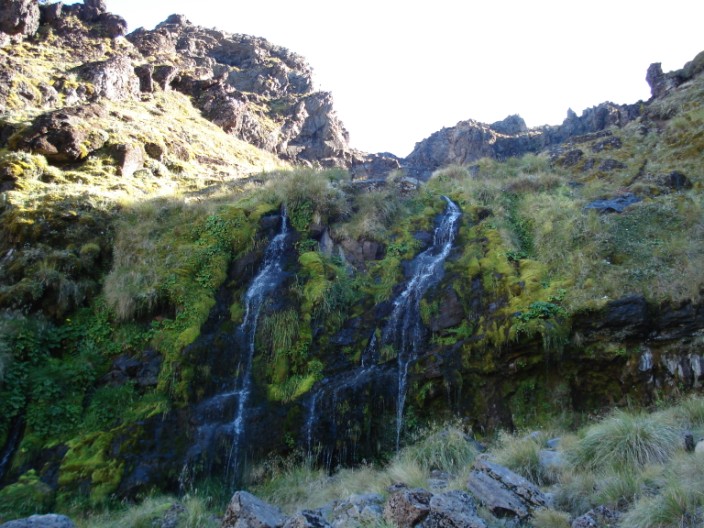
It is an oasis at Soda Springs . . .

where the moisture loving buttercups grow
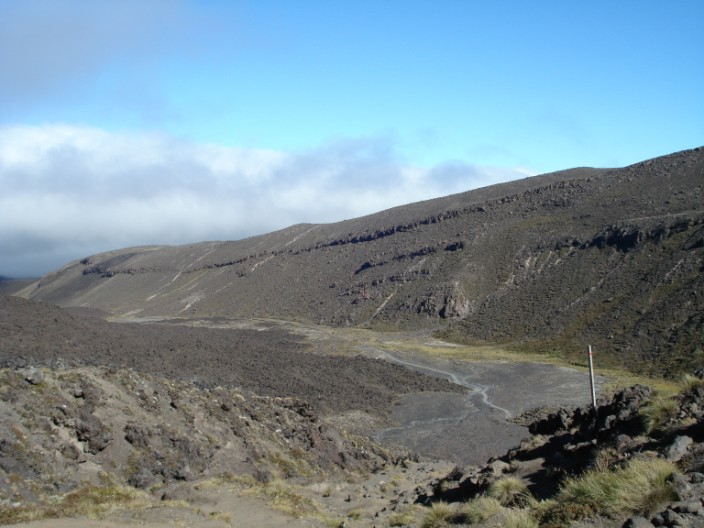
The Mangatepopo Valley, glacially carved out during last ice age and subsequently partly in-filled by lava flows

The younger lava supports fewer plants . . .

which are few and far between
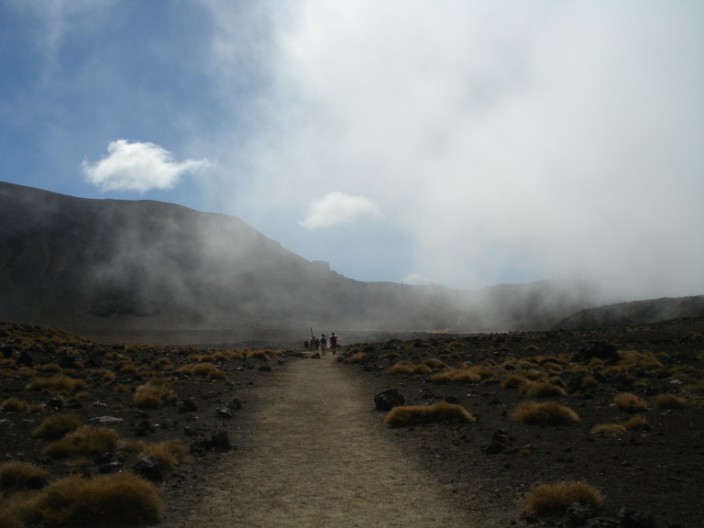
The well-trodden path is easy to follow

South Crater is not a real crater but a basin that may have been glacially carved and filled with sediment from surrounding ridges
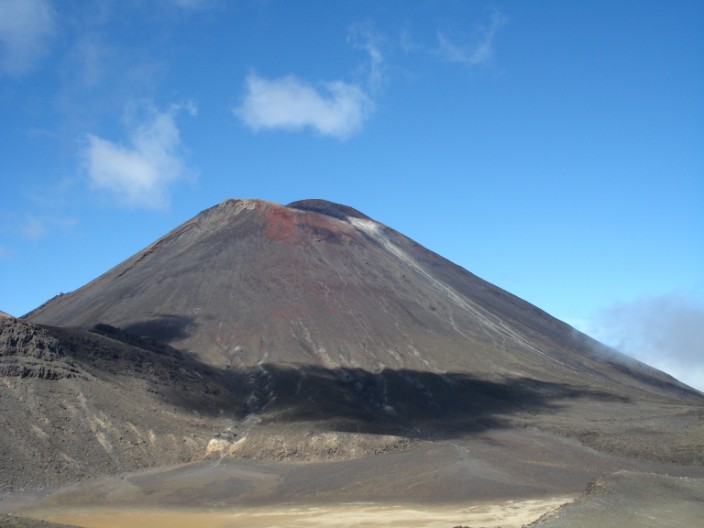
At 2,500 years old Mt Ngauruhue (last major eruption in 1975) is the youngest of the 3 volcanoes in the Tongariro National Park

From the ridge leading to Red Crater the scene is a very bleak one

The unusual formation on the right is a dike - formed when molten magma moved to the surface through a vertical channel, solidified at its outer surface then left partially hollow when the magma drained from below
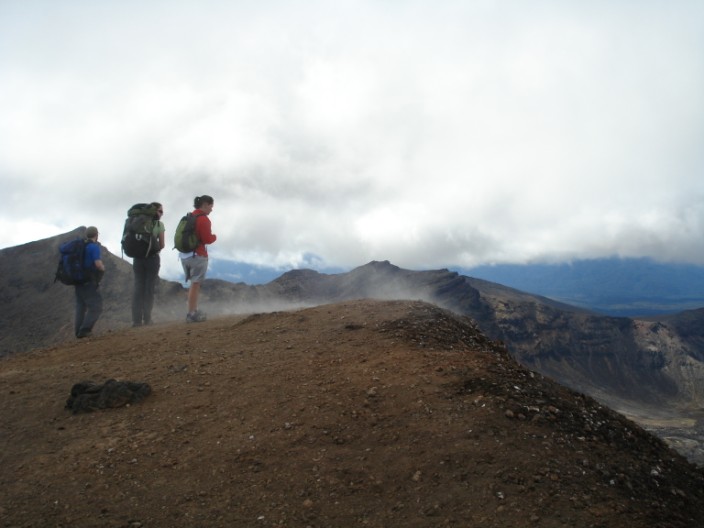
At 6,188 feet the summit of Red Crater is the highest point on the crossing
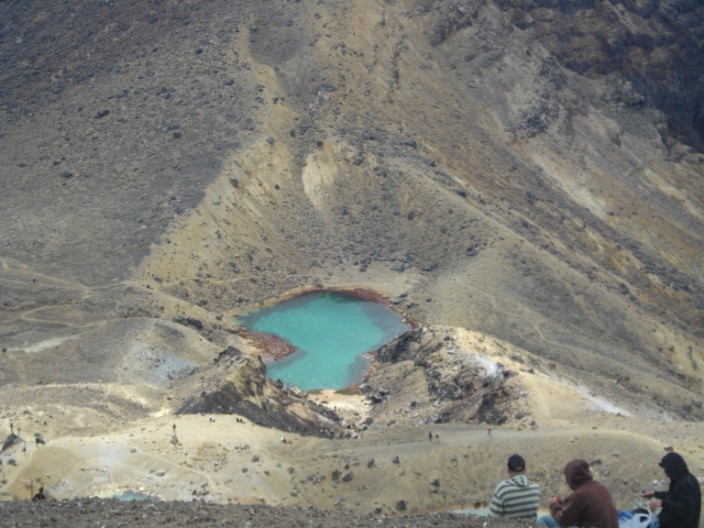
One of the three Emerald Lakes which are water filled explosion craters . . .

their brilliant greenish colour is caused by minerals which have leached from the adjoining thermal area
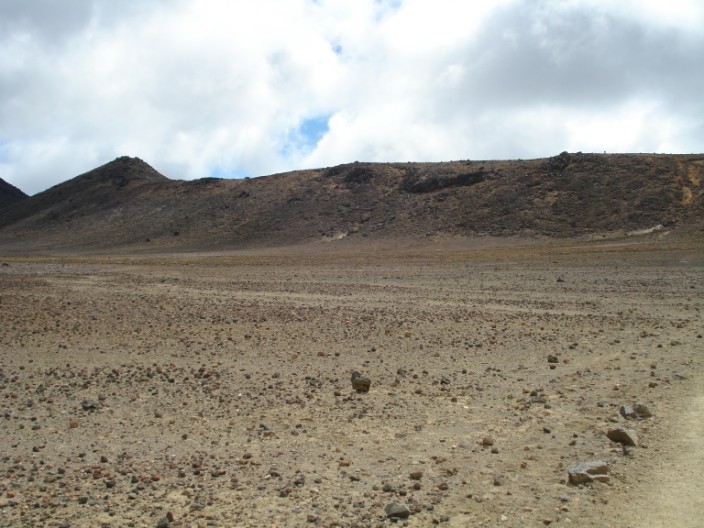
After crossing Central Crater, which is a drainage basin, . . .
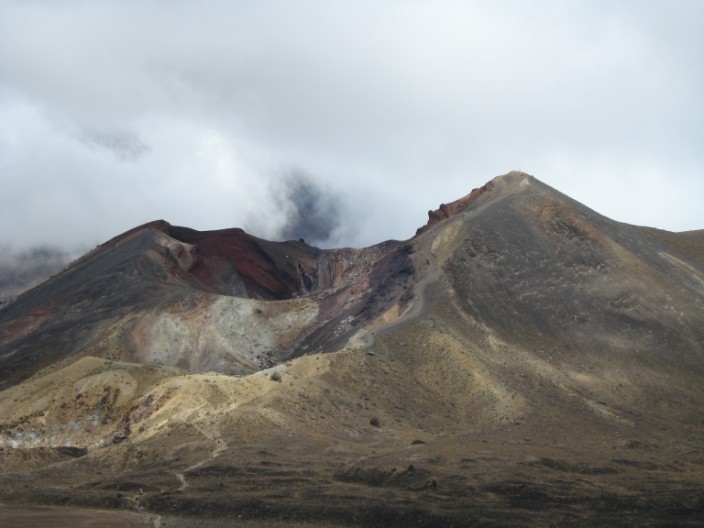
you can just make out people on the descent from the summit of Red Crater
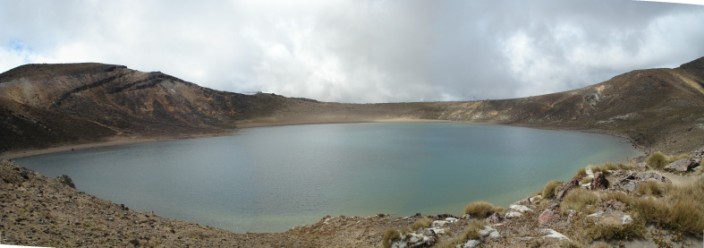
The path follows the edges of Blue Lake which is sacred to the Mauri people

Descending through sparse vegetation . . .
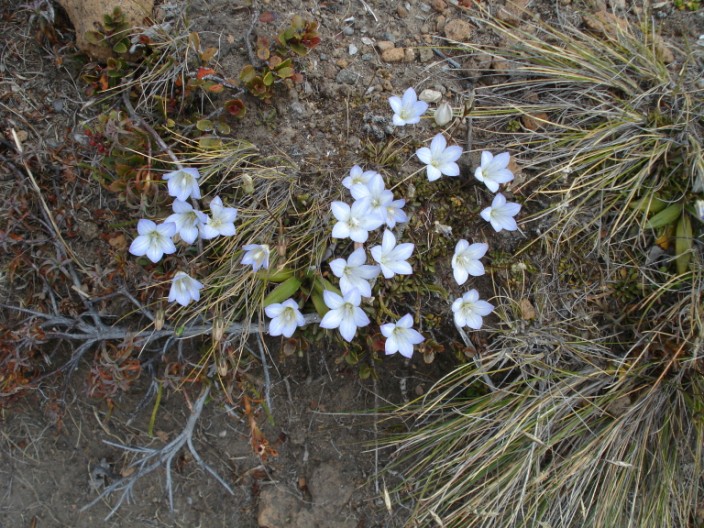
plants are only occasionally seen . . .

and nearing the end of the walk Lake Roroaira can be seen, with Lake Taupo in the distance